The development and exploitation of biotechnology and in particular the use of radio-isotope based and related techniques plays a major role in livestock science. This includes, at the cellular level, the characterization of animal genetic material and the understanding of function of genes and the genome as well as the many practical applications in animal nutrition, reproduction and disease control. Biotechnology therefore has great potential to enhance the so called "livestock revolution" characterized by the increasing demand for livestock and livestock products from the growing middle classes in countries such as India, Brazil and China.
Animal Production and Health Laboratory
The Animal Production and Health Sub-Programme primarily address the challenges imposed by highly infectious animal diseases on livestock production in FAO and IAEA Member States (MS). Our goal is to minimize the risks to livestock by the application of nuclear and nuclear-related techniques that will enable the diagnosis and control of infectious diseases thereby increasing food security and improving the livelihoods of the resource poor in MS. This objective relies on a number of strategies inherent to our philosophy. Firstly, we provide the means for MS to develop the capacity to manage the risks to livestock production by training scientists and establishing an infrastructure that can give early warning and rapid, effective action to any threat imposed by disease, especially those of a trans-boundary nature that are, essentially, global problems.
Secondly, we develop, promote, transfer and implement technologies encompassing the development of improved diagnostic tests and vaccines that will enable a more efficient response to disease risk. Thirdly, we develop gene-based technologies that enable the identification of beneficial productive traits related to disease resistance or livestock productivity.
Present activities focus on:
- Development of an ELISA for Foot and Mouth Disease that will allow differentiation between infected, uninfected and vaccinated animals.
- Development of an ELISA to improve serological diagnosis of Contagious Bovine Pleuropneumonia.
- Development of Polymerase Chain Reactions that will enable differentiation between Goat Pox Virus, Sheep Pox Virus and Lumpy Skin Disease Virus.
- Capacity building for the control of Avian Influenza through Technology Transfer and Training.
- Development of marker vaccines, companion diagnostic tests and improvement of epidemiological knowledge to facilitate control of Rinderpest and Peste des Petits Ruminants Viruses.
- Identification of Quaternary Trait Loci in small ruminants that are linked to disease resistance or productive traits and the creation of Web-accessible databases to enable MS to determine genetic diversity within indigenous livestock breeds.
- Characterization of genetic resources in small ruminants in Asia.
These activities are implemented through Co-ordinated Research Projects, Technical Co-operation Projects and Training Courses in collaboration with FAO Animal Production and Health Division (AGA) and collaborating research institutes, as well as in the Animal Production and Health Laboratory (APHL) of the FAO/IAEA Agriculture and Biotechnology Laboratories at Seibersdorf.
The world’s poorest people, some one billion mostly in Africa and Asia, depend on livestock for their day-to-day livelihood. To reduce poverty, fight hunger and ensure global food security, there is an urgent need to increase livestock production. We assist Member States to improve livestock productivity through the efficient use of locally available feed resources, adequate management practices and breeding programmes for indigenous and upgraded animals, and diagnostic tools and prophylactic measures for the control of important animal diseases, particularly those of transboundary nature, such as, highly pathogenic avian influenza (HPAI), foot-and-mouth disease (FMD), peste-des-petits ruminants (PPR) and Capripox diseases (CaP).
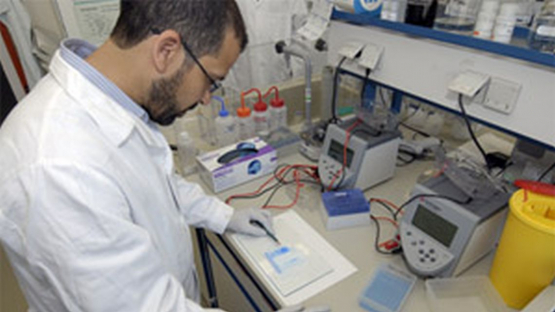
Within the FAO/IAEA Joint Programme and Animal Production and Health Subprogramme, the laboratory :
- Carries out Research and Development activities to address specific issues impacting animal production and productivity.
- Provides support to Coordinated Research Projects (CRP) and Technical Cooperation Projects (TCP) of the IAEA.
- Provides training for Member State scientists and technicians (individually or in groups) on the application of molecular techniques in Animal disease diagnosis and animal genetics.
- Provides assistance to Member State scientists in troubleshooting important issues related to animal production and health.
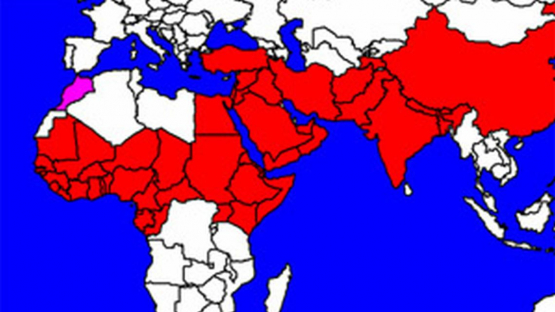
World geographical distribution of PPR in 2008
With regard to Research and Development activities, the APHL is currently using nuclear and related techniques (e.g. ELISA, nucleic acid amplification and sequencing) to:
(a) Develop and transfer to Member States early and rapid diagnostic tests, molecular epidemiology tools for surveillance and control of transboundary animal diseases which pose a major challenge to the production and distribution of food of animal origin such as PPR and CaP which are sheep and goat diseases which are endemic in nearly the same areas in Africa, the Middle East and Asia where they are threatening the production of more than one billion small ruminants as shown in the figure below.
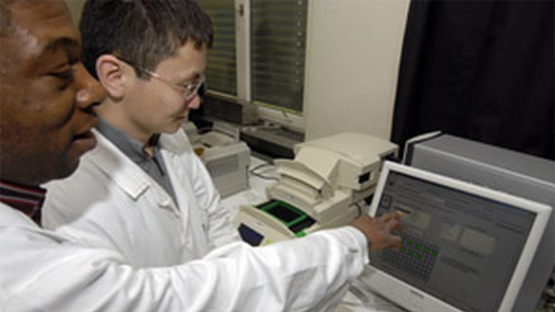
Furthermore, because the stamping out policy, i.e. culling of all animals in an infected area as the main mean for eradication of epizootic animal diseases is now less accepted by the public, the development and use of vaccines with a companion test that enables differentiation between infected and vaccinated animals is a new area of research for effective control of animal diseases.
In support of the FMD control programme, the APHL is involved in developing a test that enables the differentiation between vaccinated and infected animals. The test will be based on the use of recombinant FMD non-structural protein (NSP) i.e. protein which is not present in purified killed FMD vaccine (Read More: PDF).
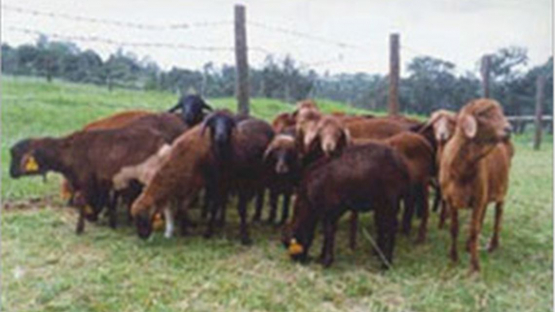
Red Masai sheep resistant to helminths (Photo: ILRI)
(b) Develop and transfer to Member States tools for the conservation and management of animal genetic resources. Examples are:
- Radiation Hybrid for Goat [pdf].
- Southern blot analysis with radioactive 32P-ATP labelling for identification of host candidate genes for parasite resistance in small ruminants [pdf].
The discovery, characterization and application of molecular markers for:
- Livestock genetic conservation programmes applying DNA microsatellite analysis,
- Traits of economic importance (e.g. gastrointestinal parasite resistance in sheep).
Indeed, the use of these genetic markers will help to increase the speed and efficiency of genetic improvements in a population. Making this genetic and genomic information available for application in small ruminant genetic programs can help make genetic improvements via Marker Assisted Selection (MAS) or Introgression (MAI) a reality.
Capacity building in Member States
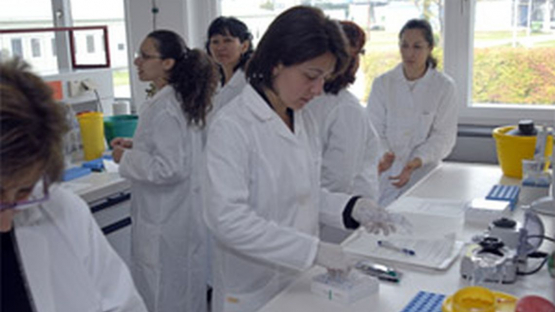
APHL is hosting scientists from Member States for both individual and group training in animal disease diagnosis and animal genetics techniques.
These are “train-the trainer” programmes i.e. intended for individuals who have the ability to transfer and disseminate the acquired knowledge within their home institute/countries.
The Laboratory produces an Annual Report which is available for downloading together with the biannual Newsletter on the Sub-Programme's present and future activities.


